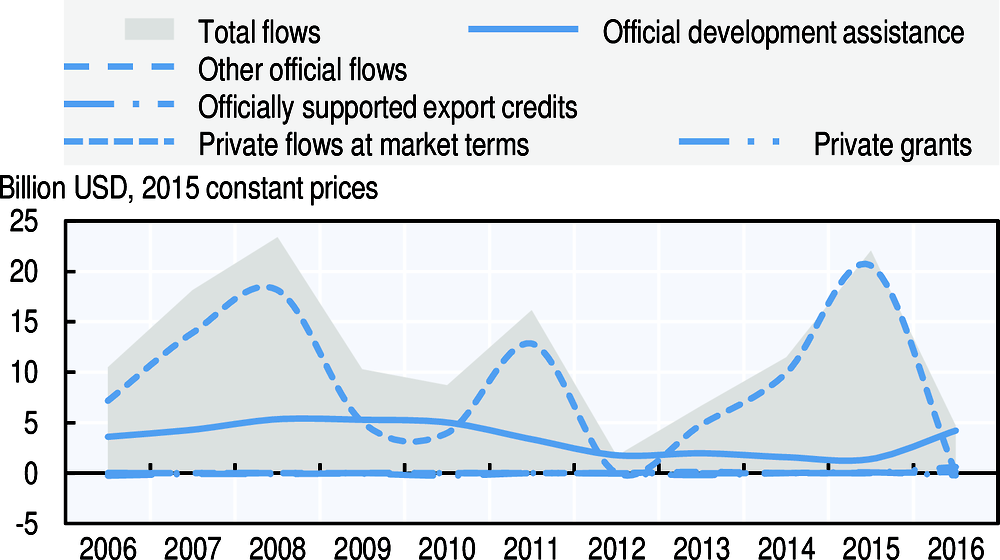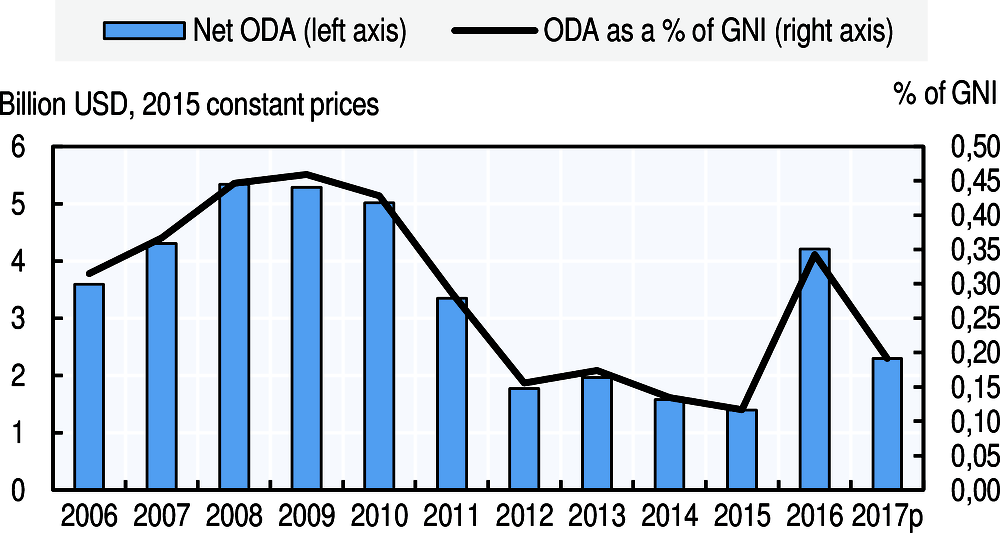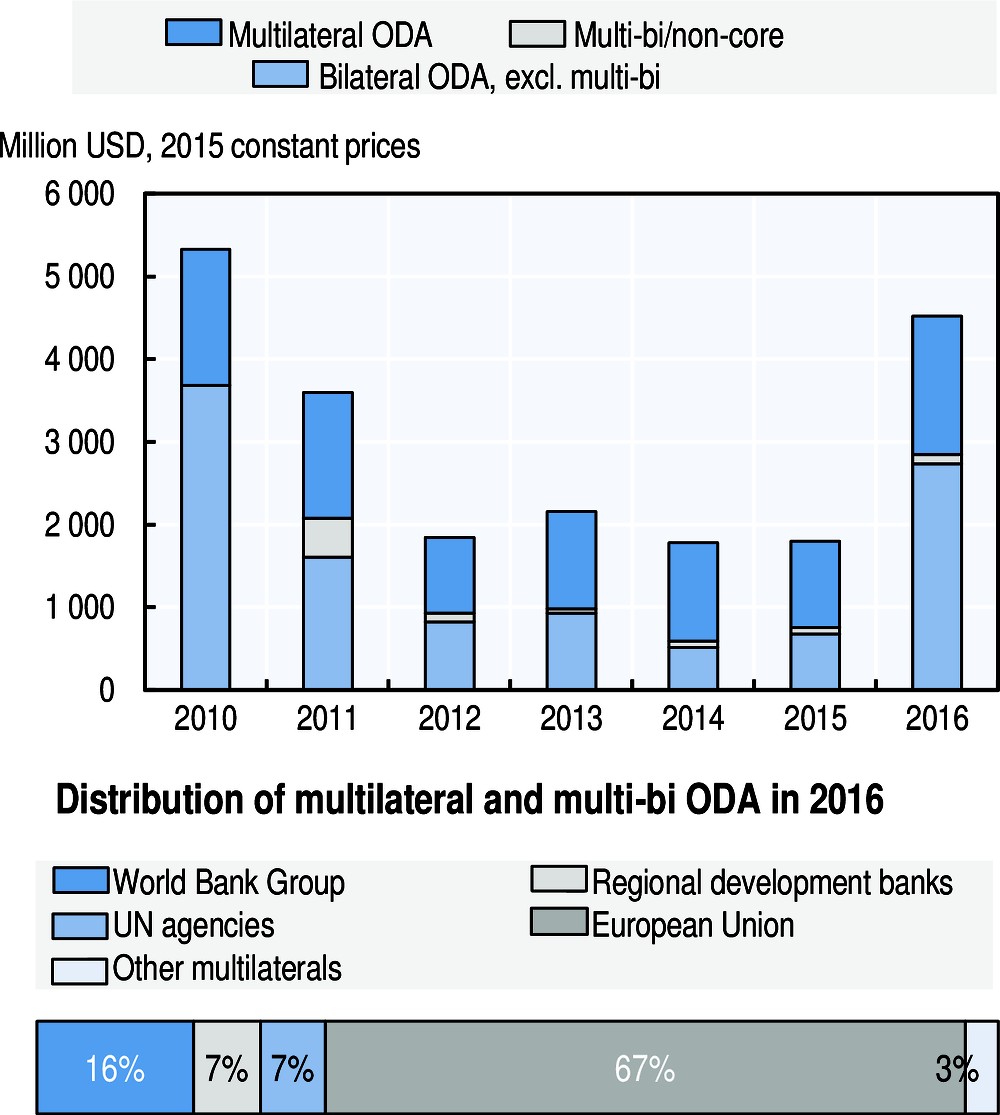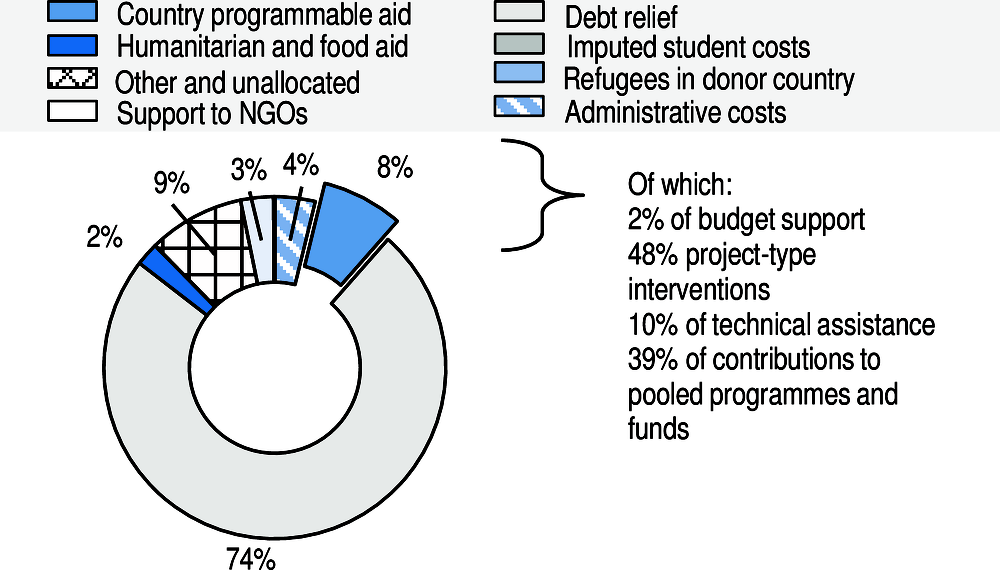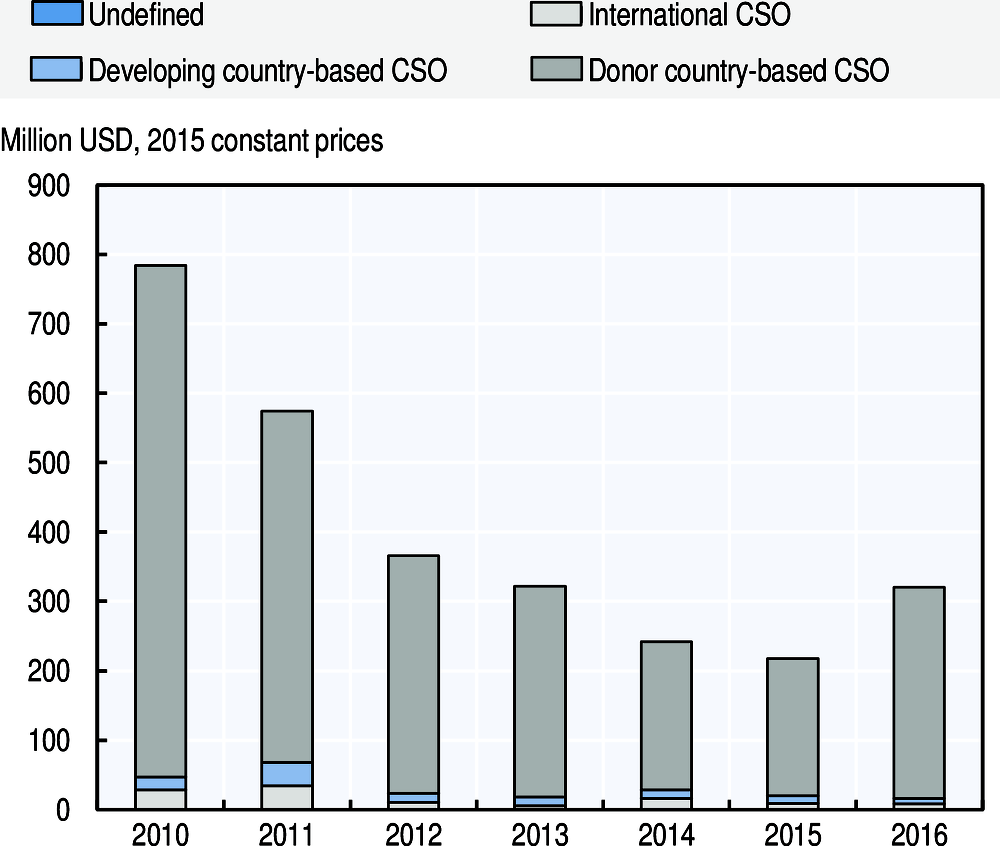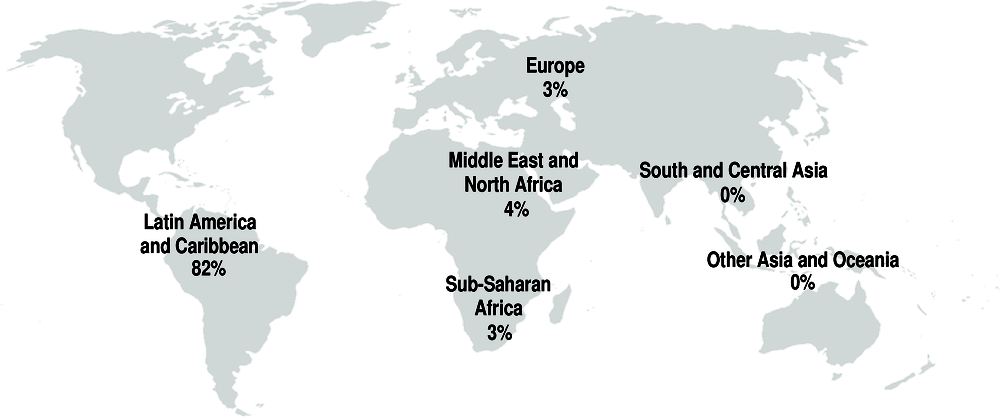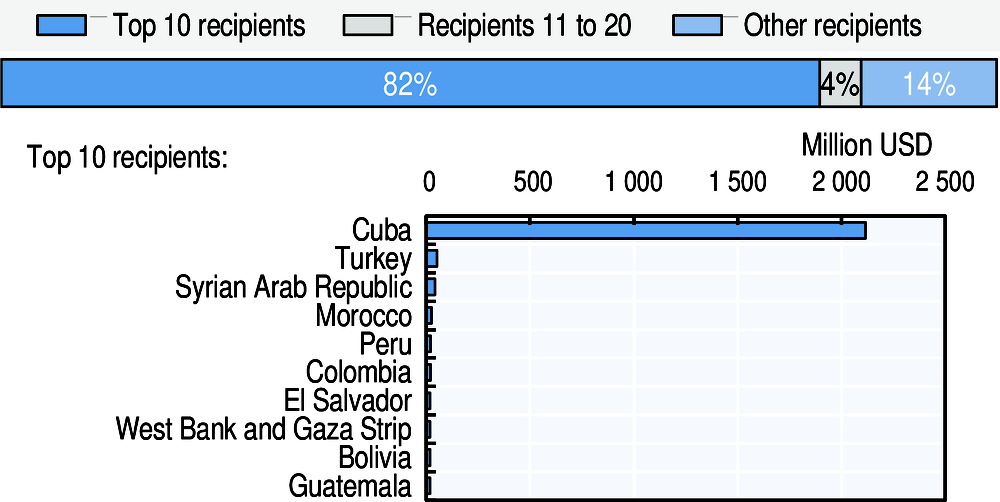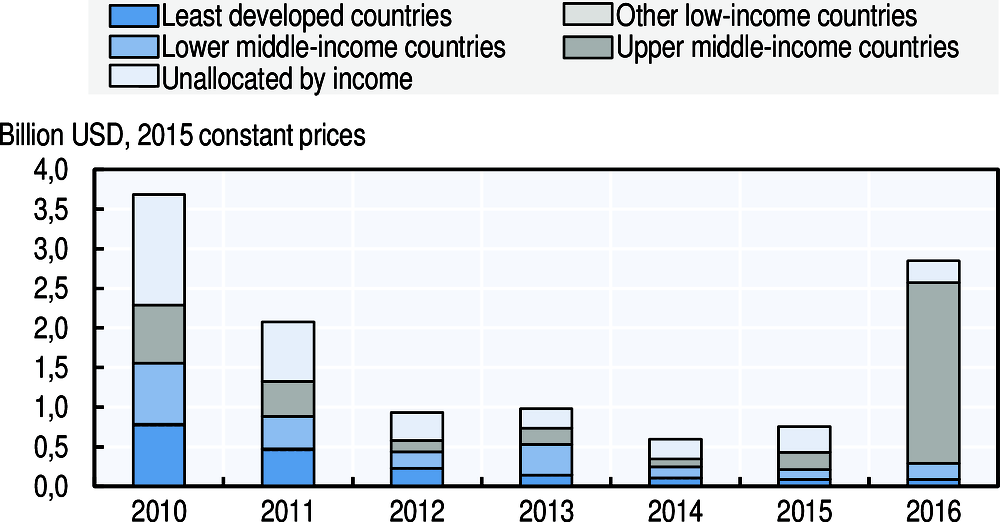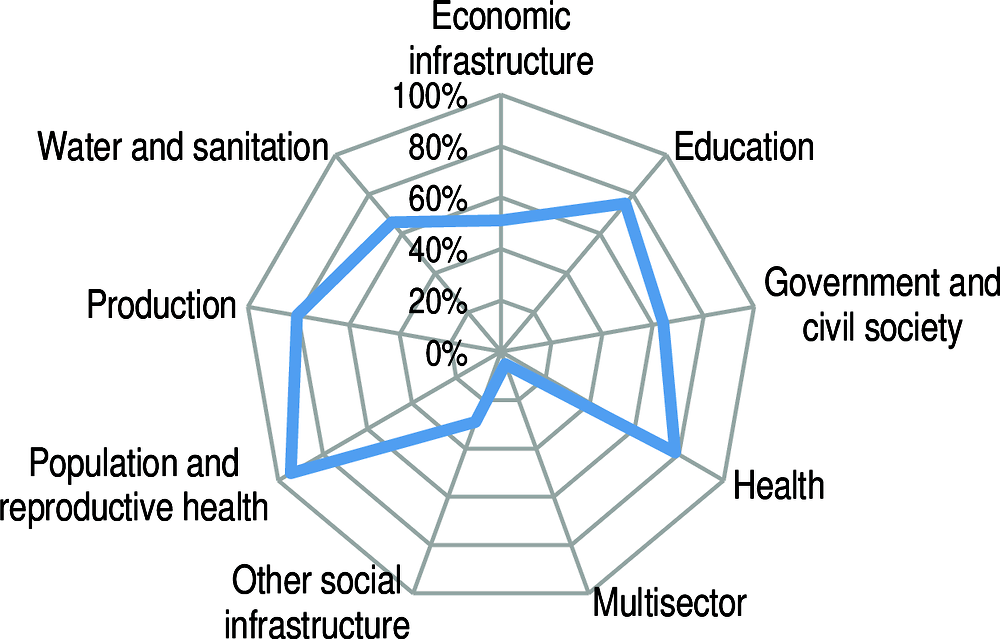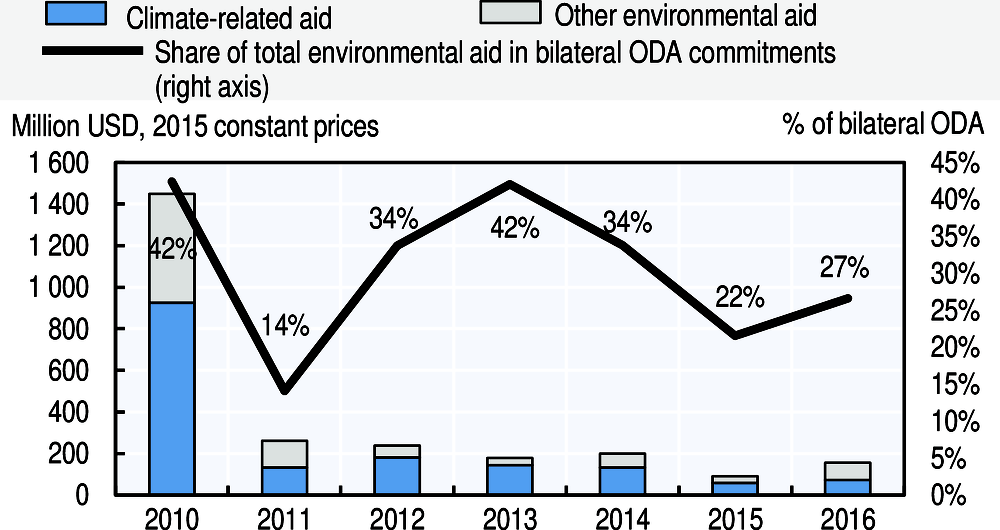Spain
Leaving no one behind: Spain’s approach and priorities
Spain has made an explicit commitment to leaving no one behind in its new Fifth Master Plan for Development Co-operation. According to Spain addressing leaving no one behind requires a differentiated, people-centred approach that adapts to the needs of different developing countries according to four fundamental variables: 1) levels of poverty; 2) human development; 3) inequality; and 4) vulnerability.
Spanish development co-operation strives to respect cross-cutting principles of human rights and fundamental freedoms, gender equality, respect for cultural diversity, and environmental sustainability. It also targets vulnerable populations in middle-income countries and reducing inequalities within developing countries. It uses indicators such as the Human Development Index, GDP per capita and the multidimensional poverty index as its evidence base for selecting countries and regions.
For Spain, applying a leave no one behind approach helps ensure that policies focus on excluded people, can increase efficiency in allocating resources, and enable a better understanding of the problems and challenges to inclusive development. A key challenge is managing potential trade-offs between reaching the furthest behind first, pressure to allocate funds efficiently to maximise impact, and the potentially higher cost of reaching the most vulnerable populations.
Financial flows from Spain to developing countries
Spain’s performance against commitments for effective development co-operation
Spain’s official development assistance
In 2017, Spain provided USD 2.4 billion in net ODA (preliminary data), which represented 0.19% of gross national income (GNI) and a 44% decrease in real terms from 2016, after a significant rise in 2016 due to exceptional debt relief for Cuba. Spain is committed, at the EU level, to collectively achieve a 0.7% ODA/GNI ratio by 2030. In 2017, in-donor refugee costs were USD 218 million and represented 9% of Spain’s total net official development assistance (ODA), compared to 2.1% in 2016.
Spain’s share of untied ODA (excluding administrative costs and in-donor refugee costs) increased from 80.8% in 2015 to 81.7% in 2016, compared with the Development Assistance Committee (DAC) average of 81.2% in 2016. The grant element of total ODA was 100% in 2016. Loans amounted to 1.8% of gross ODA in 2016.
In 2016, 63% of Spain’s ODA was provided bilaterally. It allocated 37% of total ODA as core contributions to multilateral organisations. In addition, it channelled 4% of its bilateral ODA to specific projects implemented by multilateral organisations (multi-bi/non-core contributions).
In 2016, 7.3% of bilateral ODA was programmed with partner countries. Spain’s share of country programmable aid was lower than the DAC country average (46.8%). Debt relief accounted for 74% of gross bilateral aid.
In 2016, USD 321.2 million of bilateral ODA was channelled to and through civil society organisations (CSOs). Between 2015 and 2016, ODA channelled to and through CSOs fell as a share of bilateral aid (from 28.7% in 2015 to 11.2% in 2016).
Bilateral ODA was primarily focused on Latin America and the Caribbean. In 2016, USD 2.3 billion was allocated to Latin America and the Caribbean and USD 91.5 million was allocated to sub-Saharan Africa.
In 2016, 82.2% of bilateral ODA went to Spain’s top 10 recipients. Spain reduced the number of its priority partner countries from 50 in 2012 to 23 in 2015 and 2016, focusing on three priority regions. Six of its top 10 recipients are priority partner countries. In 2016, its support to fragile contexts reached USD 183.9 million. Support to fragile contexts consisted mainly of project-type interventions (52%) and other in-donor expenditures (35%).
In 2016, 3% of bilateral ODA was allocated to least developed countries (LDCs), amounting to USD 85.7 million. This is a decrease from 11.4% in 2015 and is lower than the 2016 DAC average of 21.9%. Upper middle-income countries received the highest share of bilateral ODA in 2016 (80.2%).
At 0.04% of GNI in 2016, total ODA to the LDCs was below the UN target of 0.15% of GNI.
In 2016, 73% of bilateral ODA (USD 2.1 billion) was allocated to actions relating to debt. USD 256.2 million (8.6% of bilateral ODA) was allocated to social infrastructure and services, with strong focus on support to government and civil society (USD 95.4 million) and education (USD 57 million). Humanitarian aid amounted to USD 51.2 million. In 2016, Spain committed USD 40.1 million to promote aid for trade and to improve developing countries’ trade performance and integration into the world economy.
USD 241.1 million of bilateral ODA supported gender equality. In 2016, 41.4% of Spanish bilateral allocable aid had gender equality and women’s empowerment as a principal or significant objective, above the DAC country average of 36.5%. This is up from 35.8% in 2015. A high share of Spain’s aid to population and reproductive health, health, and production focuses on gender.
USD 154.8 million of Spain’s bilateral ODA supported the environment. In 2016, 26.6% of Spanish bilateral allocable aid supported the environment and 12.5% (USD 73 million) focused particularly on climate change, compared with the respective DAC country averages of 33% and 25.7%.
Note to reader: Annex B provides “Methodological notes on the profiles of Development Assistance Committee members”.

